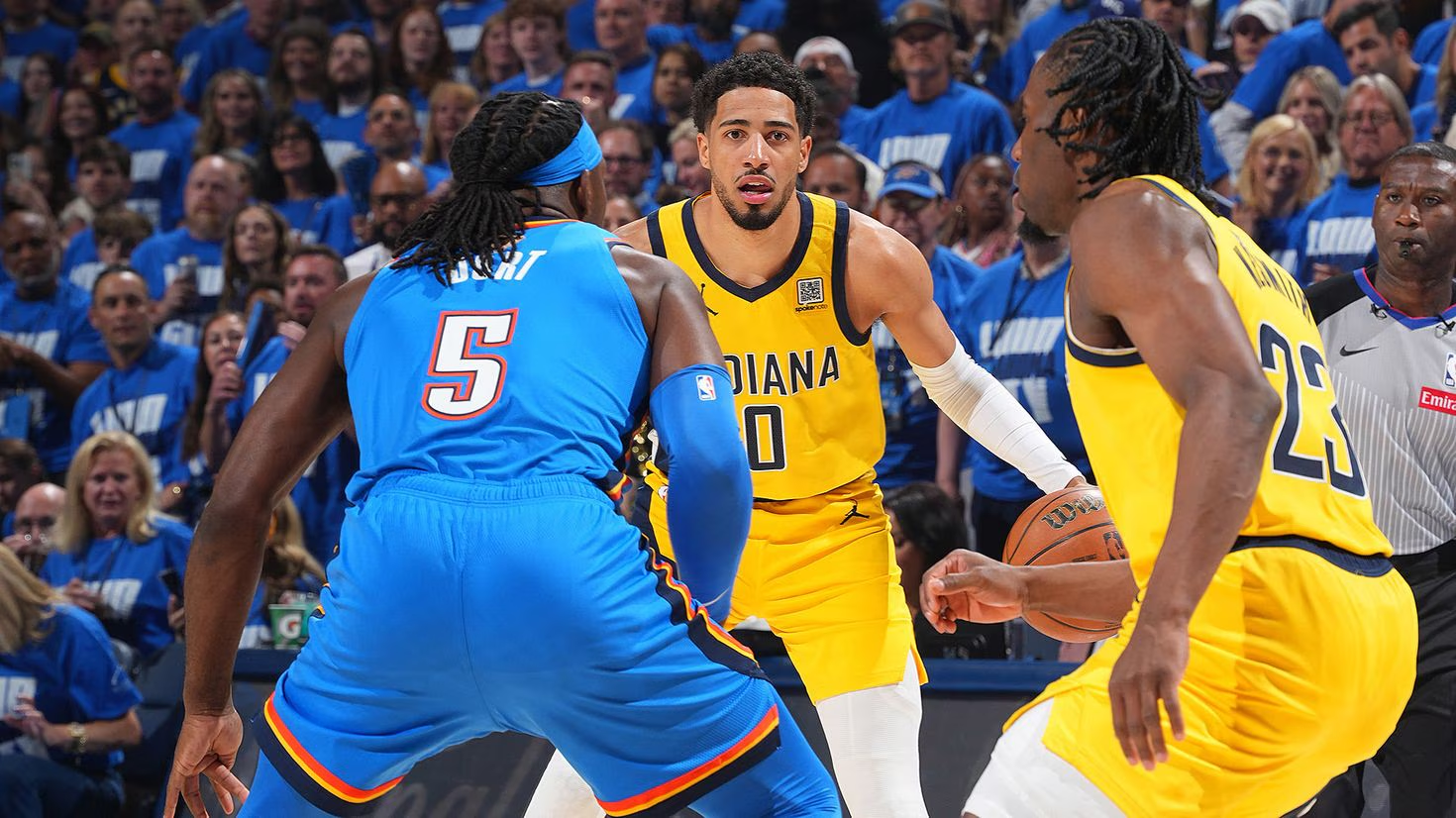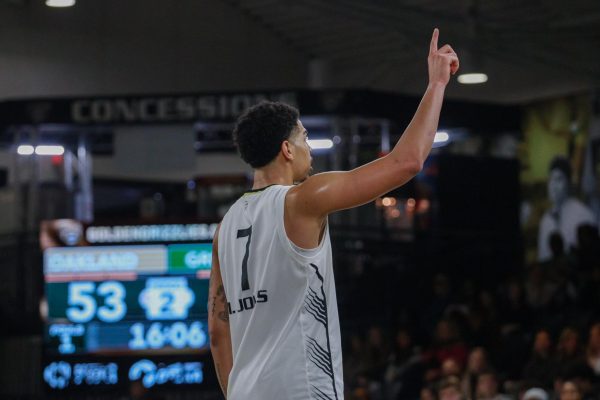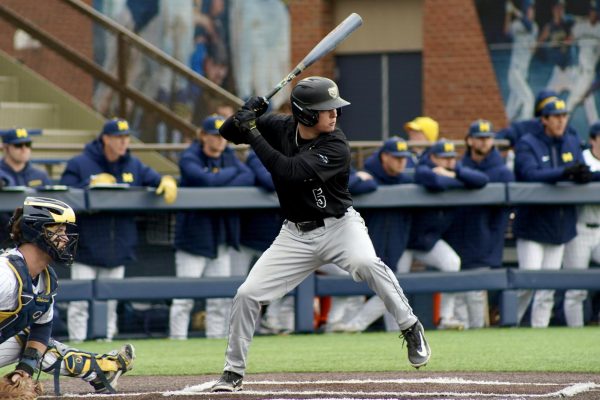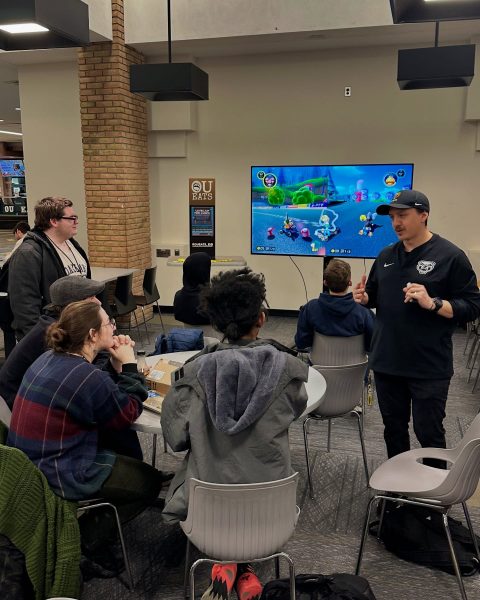Fencing team rises up
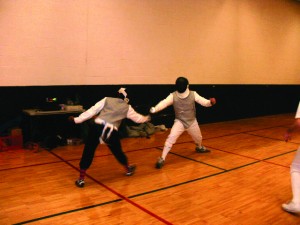
Three times a week, an unfamiliar sound rings through the lower level of Oakland’s gym. It is loud, and distinguishable from the dribbling basketballs and the hum of the exercise machines.
It’s the clanking sound of metal making contact on metal.
This is the work of the Oakland fencing team, a large club sport looking to work its way up to the levels of an NCAA varsity sport.
NCAA varsity status
The fencing team is coached by D.C. Moons, a theater major and graduate of the College of Arts and Sciences in 1986. The fencing club was re-established in 1980, and though it has disbanded and been brought back together off and on since then, it has never completely folded.
The fencing team is composed of just fewer than 50 members, and more than 40 of them are current OU students. The club has been certified by the United States Fencing Association (USFA), and many members hold a USFA ranking of “E” (the rankings range from “F” all the way up to “A”).
The team’s goal right now is simple: Become an NCAA team.
“We need at least 10 USFA fencers and then apply for to the NCAA to varsity status,” fencer Aaron Perry said. “We have at least eight right now. We’re really close.”
Game day
On Oct. 30, members of the fencing team gathered at Liberty Lakes Fencing Club in Howell to participate in a tournament and to try to capture highly sought after gold medals.
The tournaments have two to four pools, and one fencer faces each opponent from his pool once. Following pool play, the fencers are seeded and placed into a single-elimination tournament. Pool play has a scoring limit of five points, and tournament play can go as high as 15 points, as long as the fencers can finish before the match’s time limit is up.
The different styles of fencing are best represented through each of the three sword types: The foil, the epee and the
sabre.
“Foil involves a lot of footwork, a lot of style, a lot of deception,” Moons said. “You must move your feet and your weapon quite a bit more in foil. Epee requires a lot more thinking and a much more delicate touch because your arm is closer to your opponent and it’s a legal target. In foil, you have to get past the weapon and the arm to get to the target, so there’s a lot more movement around. Sabre is much more aggressive. I’ve been told that foil is dance, epee is chess and sabre is to fight.”
Ryan Wood was the lone Oakland fencer in the sabre. Though the meet did not go in his favor, Wood was able to learn and analyze where his fencing could have improved.
“The pool, that was an issue of it was my first time (using a sabre), so there was a lot more warming up in practice,” Wood said. “So most of my points, I wound up losing one or two points, I did go to La Belle, which is 4-4, next point wins.”
Wood said he improved in each match.
“In (the next) match, I started out decent, got in a few really nice hits. But then (my opponent) caught on to what I was doing and was able to find a way to counter it. And that’s really where I lost.”
The epee battles were next, and only a couple Grizzlies, Jonathan Huynh and Denise Bradley, took part in this event. Both were able to advance to the tournament’s quarterfinals before being eliminated. Bradley said she felt confident about her performance with the epee that day.
“It felt good,” Bradley said. “It was my first time doing epee. I ranked sixth out of 12, so that’s good. I wasn’t following through on a lot of my attacks, though.”
Huynh remained confident as well, saying that he is still learning the sport.
“I really enjoyed it,” Huynh said. “There were some major mistakes that I made, which included telegraphing my moves, but I think my performance today was good for the weekend. I’ve only been fencing for the semester, but I think I am improving.”
The final event was the foil. Most of the OU fencers, composed of Perry, Wood, Bradley, Brendan Morris, Michael Christofis and Tom Liptak, were competing in the foil, but as a result of the grueling competition, many were winded before they were finished competing. Some of the winning fencers did not even reach five points before the time limit expired.
Christofis’ performance was the highlight of the team’s performance at Liberty Lakes. He advanced to the fourth of seven rounds in the tournament after receiving a first-round bye and only surrendered seven points in his two victories.
“It was pretty good I guess,” Christofis said jokingly of his performance. “I have to actually work on hitting people, apparently, because I don’t. It’s just point control or something.
“(The quarterfinals) is the brick wall. I never get past that point. I’m pretty happy about my performance today, but I just couldn’t capitalize.”
The Grizzlies’ strong showing demonstrated that they have the potential to compete at the NCAA level.
“I think we should reach NCAA level by the time we graduate, so in the next two years, maybe next year,” Perry said.



